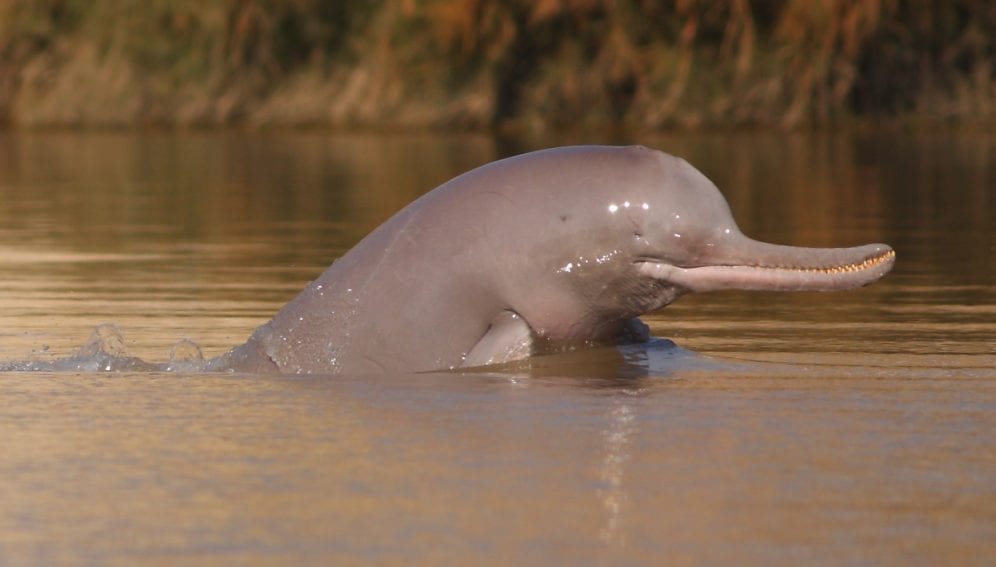Send to a friend
The details you provide on this page will not be used to send unsolicited email, and will not be sold to a 3rd party. See privacy policy.
[KARACHI] Of the many threats to the survival of the Indus river dolphin (Platanista gangetica minor) the most serious is the fact that the animal must compete with 188 million Pakistanis who depend on the river waters for agriculture and other activity, says a new study.
The study published in Biological Conservation last month (December 2015) recommends translocating the 1,200—1,700 surviving dolphins upstream of the Indus, which flows from the Himalayas to the Arabian Sea.
According to the study, the freshwater mammal, which once existed on a 3,500- kilometre stretch of the river and side channels, has lost 80 per cent of its habitat over the last century, mostly through irrigation projects.
The animal, which is also threatened by fishing, chemical pollution and depleting flows, is now largely confined to a 189-kilometre stretch of the Indus falling within the Sindh Dolphin Reserve.
The study recommends translocating the animal upstream, although this is considered risky by experts, including those from the Sindh Wildlife Department (SWD).“Dolphins do get trapped in irrigation canals and are rescued every year and returned to the river, but the distance is not so much and we can manage,” says Saeed Baloch, head of the SWD.
“To take them upstream will not be without risks.”The conservation charity, WWF Pakistan, is now studying to see exactly how risky it is to transport dolphins upstream by boat and whether translocation is actually necessary. The mammal can survive out of water for up to three hours if wrapped in wet towels and kept moist while being moved.
WWF Pakistan rules out moving the dolphins by air or overland because the animal is sensitive to noise and jerky movements. “We are left with transport by boat — which can be quick and smooth,” Uzma Khan, director of species conservation at WWF Pakistan and an author of the paper, tells SciDev.Net.
However, she says that it is important to first explore and see whether enough food is available upstream and also test water quality to ensure that the animals can survive in the new habitat.
Additionally, it is difficult to capture dolphins in the wild. "It's very risky as the animal can die due to stress, if it is hunted down," says Khan.
The study stresses maintenance of river flows, mortality monitoring, arrangements for rescue and community involvement as methods to help conserve the Indus dolphin, which may otherwise go the way of China’s now extinct ‘baiji’ dolphin.














